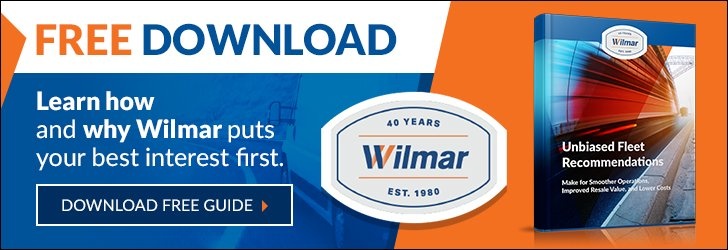The selector strategy first helps structure your initial fleet investment, then ensures each new vehicle purchase aligns with the fleet's priorities and unity of design.
A well-selected fleet will function identically from vehicle to vehicle and accept the same after-market mods, even if the fleet includes several models and years of the vehicle. You may need your fleet to look a certain way, have a certain safety rating, or reach a guaranteed speed with cargo. You may need a certain number of seats or a certain amount of adaptive cargo space. These are the elements that will create your final vehicle selector strategy.
Assess the following elements concerning your fleet to quickly determine the correct selector strategy for your business.
What Defines a Good Vehicle for Your Fleet?
Ask yourself what matters most for your fleet vehicles. Is it comfort for the passengers or safety on icy roads? Is it cargo space for your service equipment, excellent gas mileage, or a sleek look to impress exec clients?
List your top three priorities for your fleet vehicles. Assuming all other vehicle features are good to above-average, these are the features that would allow your fleet to perform its purpose with the best possible performance and profitable results.
One or More Vehicle Selector Strategies
Determine if you're building one, two, or more vehicle profiles for your fleet. Many fleets have a single identical selector strategy for every vehicle. However, it's also common to build a multi-purpose fleet with two or more vehicle types.
Often, a business will provide regular maintenance and a more heavy-duty or installation service. These fleets are often made up of two models, primarily light passenger vehicles with a few heavier cargo vehicles for the equipment for more serious calls. Transport fleets often have a variety ranging from sedans to tour buses. Hauling services build a fleet in a range of cargo capacity.
If your fleet has more than one purpose, you may want more than one vehicle selector strategy.
Example:
- Passenger sedan
- Service truck
- Cargo van
The Features Every Vehicle Should Have
Start with the features that all your fleet vehicles should have. Do you need a 4-wheel drive or a computer built into the dash? Do you need a digital speedometer or the OBD II port alongside?
Consider any after-market modifications you plan to make like device mounting, and which vehicles are compatible with your plans. Use these specs to define what all or most vehicles in your fleet must have to be up to your requirements and standards.
Example:
- Integral GPS
- X square feet of cargo space
- USB power ports
Purpose-Built Vehicle Selection
Now consider what each of your fleet vehicles needs to best perform its purpose. These may vary between vehicle profiles. Also consider vehicle details that perform best in your climate and under predictable circumstances.
Any business with a truck-mounted system will need to select their trucks to fit equipment specs. This will become part of your purpose-built selection strategy.
If you provide passenger vehicle services, comfort details like cup holders and backseat air vents might a must-have. If you occasionally provide rescue services, some of your fleet may need 4-wheel drive and towing capabilities.
Example:
- Luxury passenger features
- 4 Wheel drive
- Towing accessories
- Equipment mounting space
After-Market Commercial Mods
Once you have the details of your fleet sketched out, don't forget your planned modifications. Most commercial fleets today mount tablets and power banks within the front cabin to increase fleet management capabilities.
Many install better cargo securing points and some install whole racks of equipment and storage. You will need vehicles that are capable, simple, and sturdy to modify according to your plans.
This is also a good time to finalize the after-market mods you plan to make and get an inventory list ready.
Example:
- Mounted tablet
- Additional power and USB Ports
- Advanced GPS guidance
- Installed and mounted equipment
Identical or Diverse Fleet Appearance
Decide whether you want a fleet that is identical, matching, or diverse in appearance. Identical fleets can help build your brand image and look good when driving in formation together. A diverse fleet can add personality and cost less to assemble if you buy opportunistically. Decide how much you care about finding a specific make, model, year, style, color, and trim for each vehicle in your fleet. If you do build an identical fleet, include a strategy for buying new vehicles later on as the vehicle market develops.
Example:
- All the same make, model, and color
- Same make and model, different colors
- Same size and color, different models
- Anything you can vinyl-wrap
Building a Vehicle Selector Strategy
Combine each set of requirements into your final vehicle selector strategy. Use this as a guide and a checklist so that only the most suitable vehicles become part of your fleet. Your vehicle selector strategy can then be codified and used to update and maintain the fleet in the future.
For expert assistance in your fleet design and selection, we would be proud to facilitate the needs of your company fleet. Contact us today for a consultation on your fleet and vehicle selector strategy.









